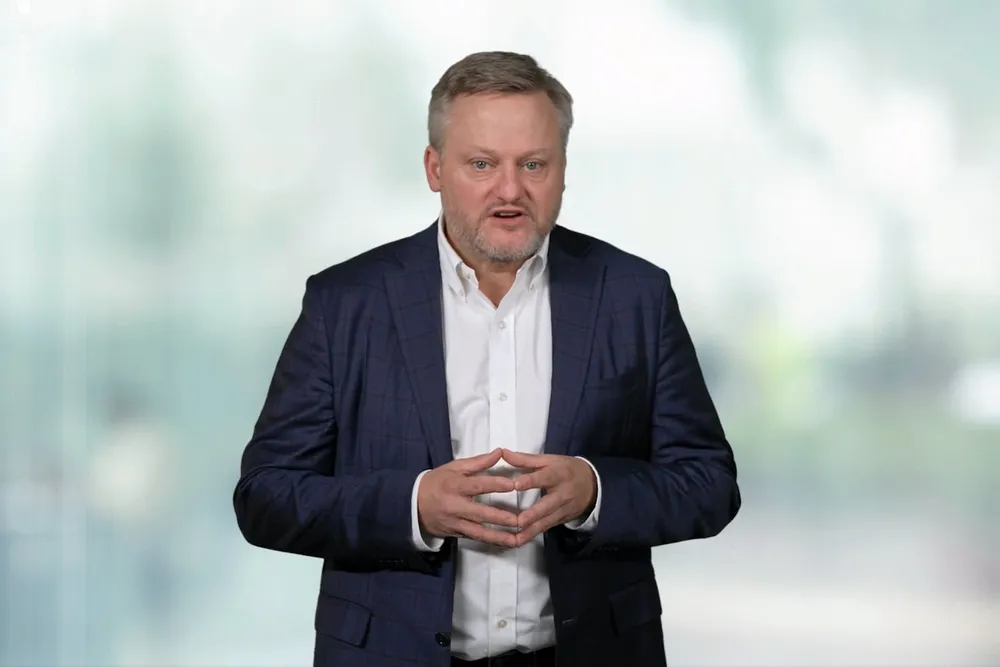'Misplaced optimism': BP got it wrong over energy transition, says CEO
BP executives admit they went 'too far, too fast' chasing low carbon investments, but will investors swallow new plan?

BP’s attempt to accelerate into the energy transition while scaling down its oil and gas business was today described by the company’s own CEO as “misplaced optimism” and “too much, too fast”, shortly after he unveiled plans for a major U-turn.
A new BP business strategy presented on Wednesday bowed to the demands of investors seeking higher profits, but still risks upsetting a significant minority of shareholders who want want to see decisive action on climate change.
Before today’s volte-face, BP stood out as the only international oil major with a plan for actively reducing fossil fuel production. The strategy dated back to 2020, when former CEO Bernard Looney said renewables would provide an alternative source of revenue as its oil output declined.
That target was initially set at 40% by 2030, but this was cut to 25% after current CEO Murray Auchinncloss took over in January.
With investors increasingly unhappy about BP’s underperforming share price, and activist shareholder Elliott Management ready to act on its 5% stake, Auchincloss has steered the company back toward core oil and gas investments.
“In 2020 we made some bold strategic changes, accelerating into the energy transition while progressively reducing our hydrocarbon business,” he said, admitting that the company had not foreseen the twin challenges of the Covid pandemic and the war in Ukraine.
Too far, too fast
“Our optimism for a fast transition was misplaced, and we went too far, too fast,” he admitted.
The challenges flowing from these changed circumstances included “a recession and a shift in attitudes of markets and governments which had a fundamental impact on the energy system,” the embattled BP boss recalled.
“Pressure on budgets meant that lower-cost energy won out in most nations, and the pace of transition and decarbonisation… was not as fast as envisioned, while energy demand continues to rise,” Auchincloss admitted.
BP plans to return to what Auchincloss described as its core strengths.
Apart from boosting investments in oil and gas by $10bn a year and setting a new objective of increasing output, the company said it will apply the same logic of reallocating capital whichever business segment is under scrutiny.
The oil giant will spend $5bn a year less than previously targeted on its 'transition businesses' leaving just $1.5-2bn annually for low carbon businesses. Those getting through for funding in this category may include "capital-light" renewables, hydrogen, biogas, biofuels and EV charging, as well as carbon capture and storage.
BP’s decapitalisation plans include the moving of its offshore wind assets to a new joint venture with Japan’s JERA group.
Auchincloss said the company had learned lessons related to energy transition businesses when “trying to do too many things or not getting the risk reward balance right.”
Core strengths
The BP boss said the company had learned the importance of preserving core strengths.
“Invest in your best assets and continue to grow them as you diversify into new business lines and remain flexible living at pace with society… a lesson from the past five years,” he stated.
“These lessons all form the foundation for our shift in strategy that we have today.”
BP says it still has the strength to build on what it describes as “a world class portfolio, with top tier oil and gas business... underpinned by distinctive advantages in trading, technology and partnerships".
Auchincloss also stressed that the company is not dumping the energy transition.
“As well as looking for more energy, countries, companies and customers are looking for lower carbon products and services to support their own decarbonisation objectives,” he stated, citing forecasts for soaring demand for biofuels and electricity.
A plan to raise $20bn from divestments by 2027 is expected to extend to a search for a strategic partner for the Lightsource BP onshore renewables development unit.
Mea culpa
BP’s executive vice-president for gas and low carbon energy William Lin said the oil giant was not alone in encountering the headwinds faced by offshore wind due to rising interest rates, inflation and supply chain issues.
Similarly, in hydrogen, Lin said a combination of slower policy and technology developments and higher costs, combined with reduced customer willingness to pay, led to much less progress than expected.
“We sought to grow too quickly, and we chased, frankly, too many options. We learned many lessons across all these areas, and we recognise those lessons incurred a cost. So as a result, we have changed our model for low carbon energy,” he said.
Lin said BP is building a increasingly focused portfolio that has already become more hybrid in renewables and more selective in its portfolio, with divestment of a 1.3GW US wind business also ongoing.
“We have two top tier platforms able to grow with discipline while being capitalized for BP and our shareholders,” he said, referring to JERA BP and Lightsource BP.
'Fossil age'
There was also criticism of the BP shift.
“There can no longer be any pretence that BP is transitioning to a more sustainable future and banks and investors must take note. Pension funds and others with a long-term outlook must question the role of this oil and gas dinosaur in a clean energy future," said Reclaim Finance analyst Louis-Maxence Delaporte.
"BP has made it clear it intends to stay in the fossil age – and will play no part in delivering net zero. Investors must sanction BP's backsliding by making their action count - stopping new investments in the company or voting against directors."
(Copyright)